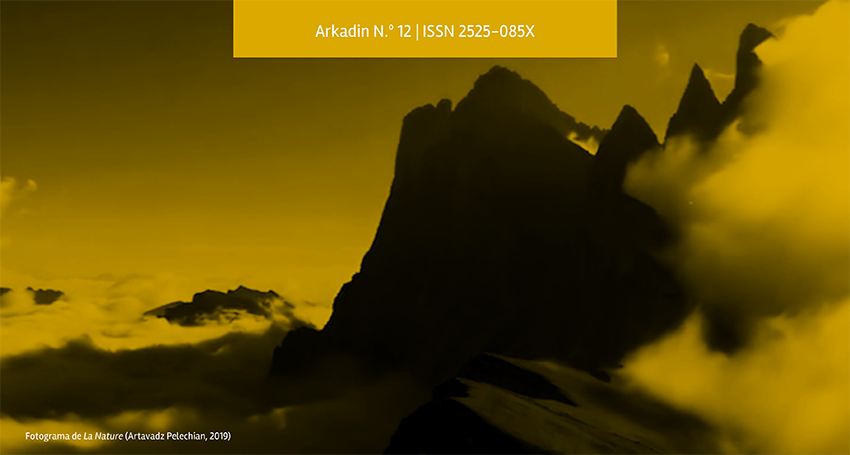Counting (singing) with The Mother: Feminine Inheritances
An Analysis About La Casa Del Recuerdo
DOI:
https://doi.org/10.24215/2525085Xe050Keywords:
Classic Industrial Cinema, Women, Maternity, InheritanceAbstract
Within the framework of a main study dedicated to mapping the maternal imaginary in Argentine fiction cinema from 1933 to the present, this work addresses the issue of transmissions or inheritances, concentrating on the analysis of La casa del recuerdo (1940), where music, songs and sound atmospheres are the vector that makes the contact with what comes from the mother possible. The text gives a general characterization of the film, to then examine the mother-child model offered by the story, both in terms of its iconographic and sound dimension, detecting tensions and resonances between socio-cultural gender imaginaries and staging.References
Ansolabehere, P. (2018). Homero Manzi va al cine. Libraria.
Barney Finn, O. (1982). Luis Saslavsky. Del esplendor a la soledad. Cine Libre 1 (2). 34-36.
Bombal, M. L. (1939). Puerta cerrada. Revista Sur (53). 78-80.
Bombal, M. L. (2021). Testimonio autobiográfico. En L. Guerra (comp.), María Luisa Bombal-Obras completas. Zigzag. 273-290.
Centeya, J. (28 de marzo de 1940). Un sapallazo. Cine Argentino (99). 59.
España, C. (2000). El modelo institucional. En C. España (dir.) Cine argentino. Industria y clasicismo. 1933-1956. Volumen I. FNA. 22-157.
Manetti, R. (2000). Melodrama, fuente de relatos. En C. España (dir.) Cine argentino. Industria y clasicismo. 1933-1956. Volumen II. FNA. 188-269.
Moltaldo, Y. (1991). La huella de Bécquer en la obra de María Luisa Bombal. La Torre. Revista de la Universidad Nacional de Puerto Rico (20). 443-459.
Pérez Ruiz, B. (2012). Lo lejano y lo bello. Feminismos y maternidades africanas a través de su literatura. Fundamentos.
S/D (28 de marzo de 1940). “La casa del recuerdo” es un melodramón lacrimógeno. Cine Argentino III (99). 22-23.
Saslavsky, L. (Director). (1940). La casa del recuerdo [Película]. Argentina Sono Film. https://www.youtube.com/watch?v=6ndr5Qbe9QQ
Downloads
Published
How to Cite
Issue
Section
License

This work is licensed under a Creative Commons Attribution-NonCommercial-ShareAlike 4.0 International License.
The acceptance of the manuscript by the magazine means the non-exclusive cession of the property rights of the authors in favour of the editor, who allows the reuse, after publication (post print), under a license Attribution-NonCommercial-NoDerivatives 4.0 International.
According to these terms, the material can be copied and redistributed by any means or in any format as long as a) the author and original source of the publication are quoted (magazine and URL of the work), access to the license is provided and whether changes have been made is mentioned; and b) the material is not used for commercial purposes.
The cession of non-exclusive rights means that after the publication (post print) in Arkadin the authors can publish their work in any language, means and format; in such cases it must be mentioned that the material was originally published in this magazine. Such cession also means the authorization of the authors for the work to be collected by SEDICI, the institutional archive of the Universidad Nacional de La Plata, and to be spread in the databases that the editorial team considers appropriate to increase the visibility of the publication and its authors.
Moreover, the magazine encourages the authors to deposit their productions in other institutional and thematic archives under the principle that offering the society the scientific and academic production without any restrictions contributes to a greater exchange of the global knowledge.
























